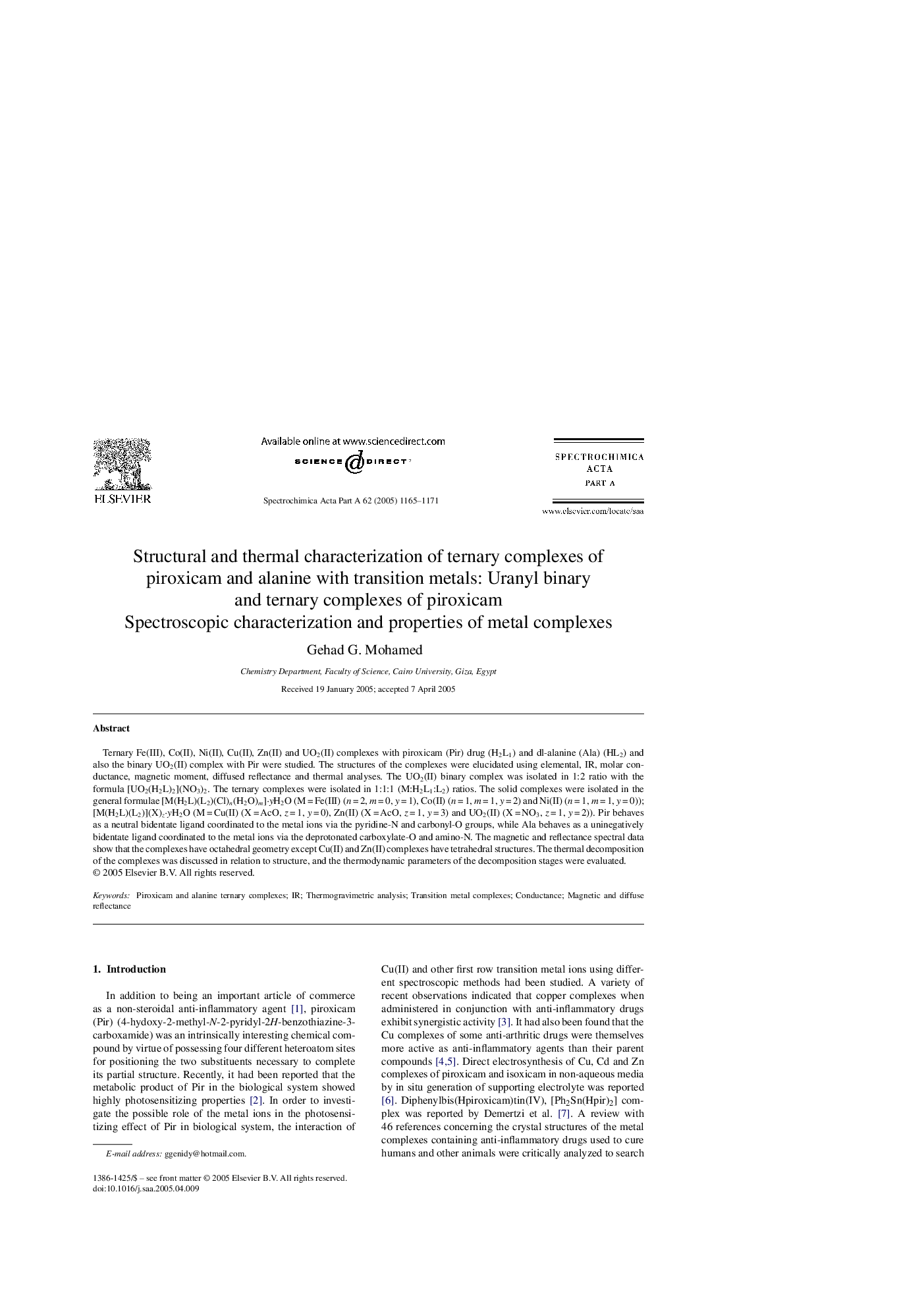| Article ID | Journal | Published Year | Pages | File Type |
|---|---|---|---|---|
| 9756969 | Spectrochimica Acta Part A: Molecular and Biomolecular Spectroscopy | 2005 | 7 Pages |
Abstract
Ternary Fe(III), Co(II), Ni(II), Cu(II), Zn(II) and UO2(II) complexes with piroxicam (Pir) drug (H2L1) and dl-alanine (Ala) (HL2) and also the binary UO2(II) complex with Pir were studied. The structures of the complexes were elucidated using elemental, IR, molar conductance, magnetic moment, diffused reflectance and thermal analyses. The UO2(II) binary complex was isolated in 1:2 ratio with the formula [UO2(H2L)2](NO3)2. The ternary complexes were isolated in 1:1:1 (M:H2L1:L2) ratios. The solid complexes were isolated in the general formulae [M(H2L)(L2)(Cl)n(H2O)m]·yH2O (M = Fe(III) (n = 2, m = 0, y = 1), Co(II) (n = 1, m = 1, y = 2) and Ni(II) (n = 1, m = 1, y = 0)); [M(H2L)(L2)](X)z·yH2O (M = Cu(II) (X = AcO, z = 1, y = 0), Zn(II) (X = AcO, z = 1, y = 3) and UO2(II) (X = NO3, z = 1, y = 2)). Pir behaves as a neutral bidentate ligand coordinated to the metal ions via the pyridine-N and carbonyl-O groups, while Ala behaves as a uninegatively bidentate ligand coordinated to the metal ions via the deprotonated carboxylate-O and amino-N. The magnetic and reflectance spectral data show that the complexes have octahedral geometry except Cu(II) and Zn(II) complexes have tetrahedral structures. The thermal decomposition of the complexes was discussed in relation to structure, and the thermodynamic parameters of the decomposition stages were evaluated.
Related Topics
Physical Sciences and Engineering
Chemistry
Analytical Chemistry
Authors
Gehad G. Mohamed,
